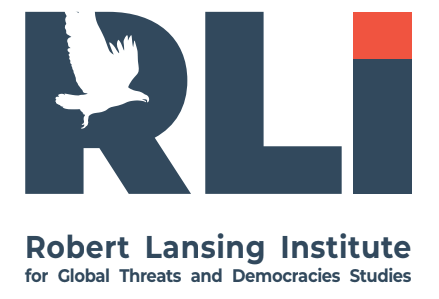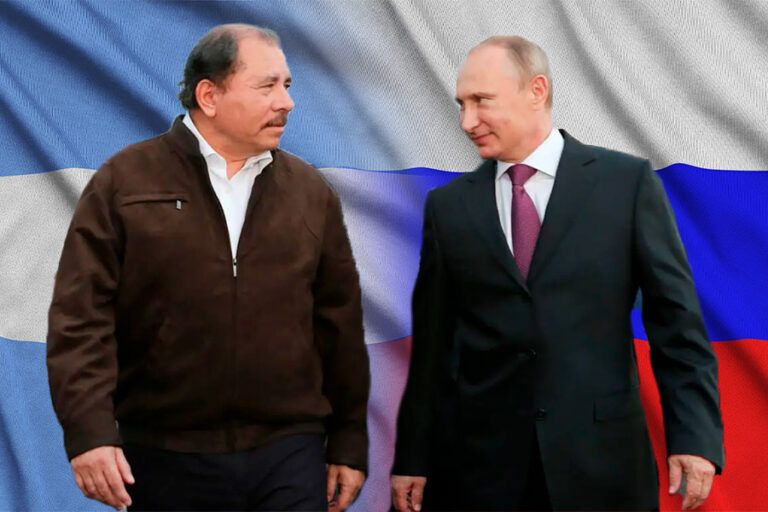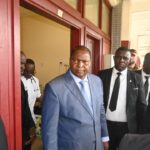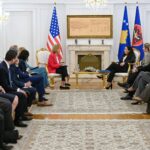I. Introduction
In a notable gesture of support for Russia’s international posture, Nicaragua has formally recognized the occupied Donbas territories as Russian. This development reinforces Nicaragua’s pattern of opposing Western-backed resolutions in the UN General Assembly and marks a deepening of the Ortega regime’s alignment with Moscow. While largely symbolic geopolitically, the decision reflects broader strategic, ideological, and economic calculations.
II. Historical and Diplomatic Background
Nicaragua has consistently supported Russia in the international arena, voting against or abstaining from UN resolutions condemning Russia’s aggression in Ukraine. In 2022, Nicaragua was one of the few countries to vote against UNGA Resolution ES-11/1, which condemned Russia’s invasion. Since then, Managua has opposed or abstained from similar resolutions, including votes on humanitarian access, territorial integrity, and the suspension of Russia from the UN Human Rights Council.
III. Strategic Reasons for Recognition
- Anti-Western Ideological Alignment
President Daniel Ortega and Vice President Rosario Murillo lead a regime ideologically rooted in anti-imperialism. Supporting Russia allows Nicaragua to reaffirm its long-standing opposition to U.S. hegemony, evoking Cold War-era alignments when the USSR was Managua’s key patron. Recognizing Donbas follows the same symbolic logic as Nicaragua’s past recognition of South Ossetia and Abkhazia as Russian-aligned territories. - Reciprocal Support from Russia
Russia has provided Nicaragua with diplomatic backing, economic support, and military cooperation. In recent years, Moscow has donated buses, wheat, vaccines, and military training assistance. In exchange, Ortega grants Russia strategic political legitimacy in Latin America—one of the few regions where Moscow can claim loyal allies. - Rejection of Western Sanctions and Isolation
Under increasing pressure from Western sanctions over electoral fraud, human rights abuses, and authoritarian consolidation, the Ortega regime seeks support from alternative international partners. Moscow, like Beijing and Tehran, provides a model of authoritarian resilience and economic cooperation outside the Western system.
IV. Domestic Political Factors
- Internal Authoritarian Consolidation
Ortega’s government has dismantled nearly all democratic checks—jailing opponents, banning independent media, and criminalizing dissent. Aligning with Russia helps justify this model as a “sovereign” path outside Western liberal frameworks, reinforcing internal legitimacy among regime elites. - Symbolic Sovereignty Projection
Recognizing Donbas allows Nicaragua to assert its independent foreign policy and reject U.S. “interventionism.” The move is meant less to impact Ukraine and more to signal that Ortega is unmoved by Washington’s condemnation—particularly as sanctions continue to isolate Nicaragua diplomatically.
V. Regional and Global Implications
- Limited Latin American Impact
While Nicaragua’s move aligns it with Venezuela and Cuba in supporting Russia, most Latin American states have either condemned the invasion or maintained neutrality. Managua’s position may harden U.S. policy toward Nicaragua, but it is unlikely to shift regional sentiment more broadly. - Further Militarization of Ties with Russia
The recognition of Donbas may pave the way for enhanced military collaboration. Russia already operates a satellite facility in Nicaragua and has sent ships and aircraft in past years. The symbolism of recognition could precede increased defense or surveillance cooperation.
VI. Opposition and Consequences
- International Isolation Deepens
Recognition places Nicaragua in a fringe group of international actors—alongside North Korea, Syria, and Belarus—who openly support Russia’s territorial revisionism. This risks further alienating European and Latin American partners. - Risk of Secondary Sanctions
Depending on whether material support (e.g., military goods, financial facilitation) accompanies recognition, Nicaragua could face secondary sanctions or export restrictions from Western countries.
VII.
Nicaragua’s recognition of Donbas as Russian territory is not merely a gesture of ideological sympathy—it is a calculated act of geopolitical defiance. Rooted in anti-Westernism, domestic authoritarian logic, and strategic dependency on Moscow, this move reflects a long-term reorientation of Nicaraguan foreign policy toward a multipolar order led by authoritarian powers. While the international impact is limited, the implications for regional alignments and domestic repression are significant. As Nicaragua further isolates itself from the West, it strengthens its role as Russia’s proxy in Central America.
The probability of Nicaragua facing additional sanctions—especially from the United States and the European Union—in response to its recognition of Donbas as Russian territory is moderate to high, depending on whether the recognition is followed by material support to Russia or other actions that undermine Western sanctions.
Factors Increasing the Probability of Sanctions
- Violation of U.S. Foreign Policy Red Lines
Nicaragua’s recognition directly contradicts the U.S. position on Ukrainian territorial integrity. The U.S. has previously sanctioned countries for supporting Russia’s annexations (e.g., Belarus, North Korea, Syria). - Pattern of Support for Russia
Nicaragua is part of a systemic pattern of undermining Western policies—through:- UNGA votes siding with Russia
- Diplomatic support for Russian actions
- Hosting Russian military and intelligence infrastructure
- Bipartisan U.S. Congressional Pressure
U.S. lawmakers (especially in Florida and Texas) have pushed for more aggressive measures against the Ortega regime. Nicaragua’s overt pro-Russian stance provides them fresh leverage. - Legal Tools Already in Place
The RENACER Act (2021) allows the U.S. to impose sanctions for anti-democratic behavior and “acts undermining peace or stability in the region.” Recognition of Russia’s territorial gains in Ukraine could be interpreted as such.
Factors That Might Delay or Reduce Sanctions
- Limited Strategic Impact
Nicaragua’s recognition is symbolic, not accompanied by arms, financial services, or oil trade. Sanctions are more likely if Nicaragua facilitates shadow fleet logistics, banking, or arms transshipment. - U.S. Sanctions Fatigue
The U.S. has already sanctioned numerous Nicaraguan officials, judges, family members of Ortega, and security institutions. Additional sanctions might have diminishing returns and little practical effect. - Desire to Avoid Regional Spillover
The U.S. may be cautious about provoking further instability in Central America amid migration and economic fragility. Escalating sanctions could push Nicaragua even closer to Russia and China.
Who Might Be Targeted
- Military Command: if evidence emerges of military cooperation with Russia in Donbas.
- Banking Sector: if Nicaraguan institutions help Russia evade financial sanctions.
- Shipping or Port Authorities: if Managua facilitates logistics for Russian oil exports.
- Diplomatic Corps: specific diplomats could be sanctioned for propagating Russian disinformation or lobbying in multilateral settings.
Assessment of Probability
| Scenario | Probability | Notes |
| Symbolic sanctions (e.g., more officials) | High | Likely as a message of deterrence |
| Sectoral sanctions (e.g., ports, banking) | Medium | Depends on proven material involvement |
| Multilateral EU sanctions | Low | EU states unlikely to act over symbolic recognition alone |
| U.S. secondary sanctions on third parties | Low–Medium | Possible if Nicaragua helps Russia evade oil sanctions |
Nicaragua is already heavily sanctioned, but recognition of Donbas increases the likelihood of additional symbolic or targeted sanctions—especially from Washington. The real tipping point would be if Managua begins playing an operational role in supporting Russia’s war economy. Until then, further isolation and reputational costs are more probable than sweeping new sanctions.

Here’s a visual timeline showing key U.S. sanctions against Nicaragua from 2018 to 2025. As you can see, sanctions have intensified in response to human rights abuses, electoral manipulation, and authoritarian consolidation. Nicaragua’s 2025 recognition of the Donbas as Russian territory may trigger a new wave of international sanctions—especially from the U.S. and EU—due to its alignment with a globally condemned annexation policy.
1. Russian Intelligence Influence Operations
- FSB and GRU Activity: There is longstanding suspicion that Russian intelligence has cultivated influence over Nicaragua’s ruling elite through military training programs, security cooperation, and elite protection services.
- Media and Disinformation: Russian state-controlled media (e.g., RT, Sputnik) heavily operate in Nicaragua, shaping public narratives and justifying Moscow’s positions.
- Digital Infrastructure: Russia helped build Nicaragua’s cyber and surveillance infrastructure (e.g., the “El Carmen” surveillance hub), which raises concern over deeper digital penetration and control by Russian agencies.
2. Internal Surveillance and Regime Security
- Ortega-Murillo Regime’s Paranoia: The regime relies on aggressive internal intelligence gathering to prevent dissent. Support from Russian security services bolsters its internal surveillance capabilities.
- Exporting Repression Models: Russia reportedly shares best practices for protest suppression, electoral manipulation, and counterintelligence with Nicaragua—mirroring Belarus-Russia cooperation.
3. Strategic Signaling
- Global Axis of Authoritarianism: Nicaragua’s recognition of Donbas may be intelligence-driven signaling to align firmly with authoritarian states (Russia, Iran, China, Syria, North Korea).
- Testing U.S. Red Lines: Nicaragua may be probing how far it can support Russia before triggering a harsher U.S. response—valuable intelligence for others in the anti-Western camp.
4. Russian Military Presence and Future Basing
- Military-to-Military Cooperation: Russia has expanded its military cooperation with Nicaragua, including allowing the presence of Russian troops and warships in Nicaraguan ports under the pretext of “counter-narcotics operations.”
- Potential SIGINT Base: Analysts believe Moscow may pursue a future signals intelligence base in Nicaragua, given its proximity to the U.S., reminiscent of Cold War-era ambitions.
5. Intelligence Coordination with Venezuela and Cuba
- Triangular Intelligence Ties: Nicaraguan intelligence closely coordinates with Havana and Caracas—both allies of Moscow. Shared intelligence supports regional repression and Russian strategic foothold in Latin America.
- Cuba as a Liaison: Cuban intelligence may act as an intermediary between Russian and Nicaraguan services, facilitating logistical and training support under the radar.
6. Role of Sanction Evasion Networks
- Financial Intelligence Gaps: Nicaragua may be helping Russia launder money or re-export sanctioned goods. Intelligence gathering on this would be key for Western sanctions enforcement.
- Shadow Diplomacy: Nicaragua could be a silent node in Russia’s “sanctions evasion” architecture—like Syria or the UAE—where formal recognition helps legitimize illicit channels.
Responsibility for managing Russia’s relations with Nicaragua—especially in the context of its recognition of the Donbas regions as Russian territory—likely falls under a network of political, diplomatic, intelligence, and military actors. The following are the key individuals and institutions that can be held responsible or influential in this relationship:
1. Nikolai Patrushev – ex-Secretary of the Russian Security Council
- Role: Oversees strategic intelligence and geopolitical coordination.
- Why relevant: Patrushev is deeply involved in managing Russia’s Latin America policy as part of broader anti-U.S. alignment.
- Likely function: Coordinator of hybrid influence, intelligence support, and anti-Western coalition building that includes Nicaragua.
2. Yury Ushakov – Foreign Policy Aide to President Putin
- Role: Senior Kremlin official managing diplomatic outreach.
- Why relevant: Ushakov plays a behind-the-scenes role in shaping bilateral meetings and recognition strategies.
- Likely function: Helped broker Nicaragua’s symbolic moves through diplomatic channels.
3. Sergey Lavrov – Minister of Foreign Affairs
- Role: Formal overseer of Russian diplomacy.
- Why relevant: Lavrov has visited Nicaragua and praised its stance toward Ukraine.
- Likely function: Public face of diplomatic gratitude and continued alliance-building with Ortega’s regime.
4. SVR (Foreign Intelligence Service) and GRU (Military Intelligence)
- Role: Intelligence coordination and influence operations.
- Why relevant: Russia uses these services to shape elite decisions in Latin America and monitor U.S. influence.
- Likely function: Supporting pro-Russian narratives in Nicaragua, aiding Ortega in domestic information control.
5. Rosoboronexport / Ministry of Defense
- Role: Handles arms sales, military training, and cooperation.
- Why relevant: Russia has supplied Nicaragua with military equipment and personnel for years.
- Likely function: Securing loyalty through military dependency and institutional ties.
6. Alexander Schetinin – Director of the Latin American Department, Russian MFA
- Role: Key diplomat for regional affairs.
- Why relevant: Manages embassies and country-specific strategies in the region.
- Likely function: Day-to-day coordinator of Nicaragua policy, including recognition matters.
7. RT en Español / Sputnik Mundo
- Role: Media and propaganda tools.
- Why relevant: Russia leverages these channels to influence public opinion and support regimes like Ortega’s.
- Likely function: Framing Nicaragua’s recognition of Donbas as a heroic stand against the West.
Nicaragua’s recognition of the Donbas regions (Donetsk and Luhansk) as Russian territory carries significant geopolitical, legal, and economic consequences—both for Nicaragua and the international system:
1. Consequences for Nicaragua
A. Diplomatic Isolation
- From Western democracies: The EU, U.S., Canada, and their allies may increase Nicaragua’s diplomatic marginalization.
- Within Latin America: Other Latin American governments—especially democratic or neutral ones like Chile, Brazil, or Mexico—may distance themselves to avoid association with Russia’s war in Ukraine.
B. Sanctions Risk
- Current risk: While Nicaragua is already under certain U.S. sanctions, recognizing occupied territories could trigger expanded sanctions—including on Nicaraguan elites, businesses, and financial systems.
- Precedent: Similar acts by Syria and North Korea triggered stronger sanctions or frozen aid.
C. Military and Intelligence Dependence on Russia
- Greater exposure: This recognition tightens Ortega’s regime to Moscow’s support, increasing reliance on:
- Russian arms deals;
- Intelligence and cyber cooperation;
- Disinformation assistance.
D. Risk of Domestic Backlash
- Opposition groups can frame Ortega’s recognition as aligning with authoritarian imperialism, potentially stirring public criticism or unrest.
2. Consequences for International Law and Norms
A. Erosion of Sovereignty Principles
- Nicaragua’s move undermines the UN Charter’s core tenets by recognizing territory annexed through military force, weakening international legal order.
B. Precedent for Other Rogue States
- Nicaragua’s recognition may embolden other authoritarian or pariah regimes (e.g., Belarus, North Korea, Syria) to follow suit, giving Russia diplomatic “fig leaves.”
3. Economic and Geostrategic Consequences
A. Loss of Access to Western Financial Systems
- New designations by the U.S. Treasury could restrict Nicaragua’s access to:
- Dollar transactions;
- Multilateral aid (e.g., IDB, IMF, World Bank);
- Western markets.
B. Limited Economic Upside
- Russia cannot offer significant economic benefits to Nicaragua under sanctions.
- Any increase in military aid or trade will be symbolic or limited to bartered goods and energy deals.
4. Intelligence and Military Consequences
A. Use of Nicaragua for Strategic Positioning
- Russia may seek to increase surveillance infrastructure or cyber units in Nicaragua to monitor U.S. regional activity.
- It might also deploy military instructors or naval assets in port facilities as a symbolic deterrent.
B. U.S. and Allied Intelligence Response
- Increased surveillance by U.S. Southern Command (SOUTHCOM) and greater HUMINT activity to monitor Russian footprints in Central America.
5. Consequences for Ukraine
A. Propaganda Win for Russia
- Russia will cite Nicaragua’s recognition to legitimize its narrative of growing support for the annexation of Donbas.
B. No Strategic Loss for Ukraine
- This recognition has no legal effect and is diplomatically marginal, but could trigger more diplomatic lobbying by Kyiv in Latin America to prevent further erosion.
Russia’s HUMINT (Human Intelligence) influence in Nicaragua is assessed to be medium-to-high, with strong historical foundations and renewed strategic depth under the Ortega regime. Here’s a structured assessment:
Russia’s HUMINT Influence in Nicaragua: Medium–High
1. Historical Intelligence Ties
- Soviet legacy: In the 1980s, the KGB established deep relations with Nicaragua’s Sandinista government and its security apparatus (then DGSE, now Direccion General de Seguridad del Estado).
- Trained cadre: Many Nicaraguan officers were educated in the USSR or Cuba and remain in senior roles in today’s security and intelligence structures.
- This created a generational bridge between Russian and Nicaraguan services.
2. Current Intelligence Infrastructure
A. Presence of Russian GRU and SVR
- Russian military intelligence (GRU) is likely active through:
- Embassy cover positions (defense attachés)
- “Instructors” working with Nicaraguan military and police
- Possible cyber operations training units
B. Signals Intelligence Facility near Managua
- Russia operates a GLONASS tracking station in La Crucita near Managua, officially for satellite navigation.
- Western intelligence suspects it doubles as an electronic surveillance outpost, gathering regional SIGINT and supporting Russian HUMINT activities (e.g., communications interception, targeting recruitment).
3. Ties Between FSB and Nicaraguan Security Services
- Reports (2018–2023) indicate joint training programs between:
- FSB and Nicaragua’s Interior Ministry
- Russian “anti-terrorism” trainers and local police
- These programs often serve as HUMINT recruitment opportunities and cover for deeper collaboration.
4. Influence Operations and Local Assets
- Russia likely cultivates sympathetic political figures, academics, journalists, and security officers as:
- Information gatherers
- Narrative influencers
- Recruiters of low-level access agents in civil service or telecoms
- Russian media arms (like RT en Español and Sputnik) are also tools for spotting and assessing talent in Nicaragua’s academic and political elite.
5. Comparative Risk Assessment
| Dimension | Assessment |
| Embassy-based HUMINT | High |
| Military-intelligence cooperation | High |
| Cyber + hybrid influence | Medium–High |
| Control of domestic agents | Medium |
| Penetration of opposition | Low–Medium |
6. Countervailing Factors
- Lack of strategic secrecy: Nicaragua is small and autocratic, so penetration is less necessary—many activities are openly coordinated.
- U.S. awareness: U.S. Southern Command and CIA closely monitor Russian activities in Nicaragua, especially near La Crucita and through the embassy.
Conclusion
Russia’s HUMINT influence in Nicaragua is strategic but limited in scope, centered on:
- Security services;
- Propaganda infrastructure;
- Military cooperation.
It’s less about broad penetration and more about deep access to power circles, enabling Moscow to:
- Maintain a foothold in Central America
- Use Nicaragua as a platform for broader Latin American influence
- Support operations aimed at the U.S. and its allies.
The probability that Russia has human assets or cooperating contacts within President Daniel Ortega’s administration is assessed as very high (80–90%), based on historical ties, strategic alignment, and observable intelligence cooperation.
Here’s a detailed breakdown:
Why the Probability is Very High
1. Long-Term Strategic Alignment
- Ortega’s Sandinista regime has been closely aligned with Russia since the Soviet era.
- Key figures in the government were trained in the USSR or Cuba and maintain ideological or institutional loyalty.
- This creates deep trust networks, ideal for agent cultivation or cooperation.
2. Security and Intelligence Cooperation
- Russia’s FSB and GRU have direct links with Nicaragua’s police, army, and intelligence services.
- Joint training, “anti-terror” cooperation, and information-sharing arrangements enable recruitment opportunities and foster regular contact with decision-makers.
3. Limited Internal Oversight
- Ortega’s regime is authoritarian and centralized, with minimal transparency or accountability.
- This makes it easier for foreign intelligence services to cultivate assets or collaborators at various administrative levels—especially in:
- Ministry of Interior;
- Military Intelligence;
- Telecommunications and infrastructure;
- Foreign Affairs.
4. High-Level Political and Economic Dependence
- Ortega relies heavily on Russia for:
- Political support at the UN;
- Police and military hardware;
- Fuel, wheat, and dual-use technologies.
- This dependency gives Russia leverage to place liaison officers or embedded advisors, especially under diplomatic or technical covers.
Likely Nature of Assets in the Ortega Government
| Type of Asset | Likelihood | Examples of Access |
| Witting collaborators | Very High | Ministers, police chiefs, military brass |
| Informal contacts/liaisons | Very High | Advisors, mid-level officials |
| Direct recruited agents | Medium–High | Civil servants in sensitive ministries |
| Commercial intermediaries | Medium | Sanction-evading logistics and finance |
Precedents and Signals
- In 2022, Nicaragua opened its territory to Russian troops and security units via a controversial presidential decree. This shows exceptional trust and coordination, likely involving embedded intelligence personnel.
- Russia’s GLONASS station in La Crucita is rumored to be staffed by Russian intelligence under scientific or diplomatic cover—an operation that would require local official complicity.
The likelihood of Russian assets inside Ortega’s administration is very high due to:
- Decades-old ideological loyalty
- Shared anti-U.S. positioning
- Deep institutional links through military and security cooperation
- Minimal internal oversight
- Strategic convergence
Russia likely does not need traditional “spies”in such an allied regime—it probably has “witting collaborators” at senior levels who act in tandem with Russian priorities.

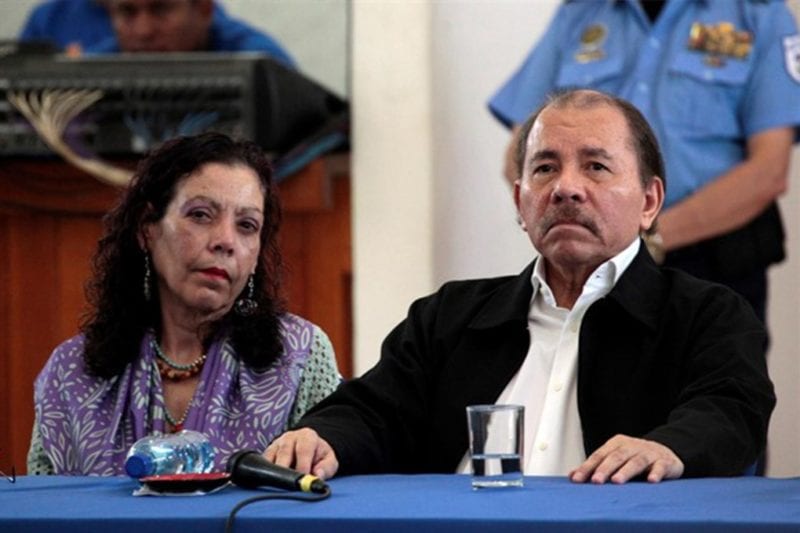
More on this story: Nicaraguan President tries to secure his presidency while losing public support
